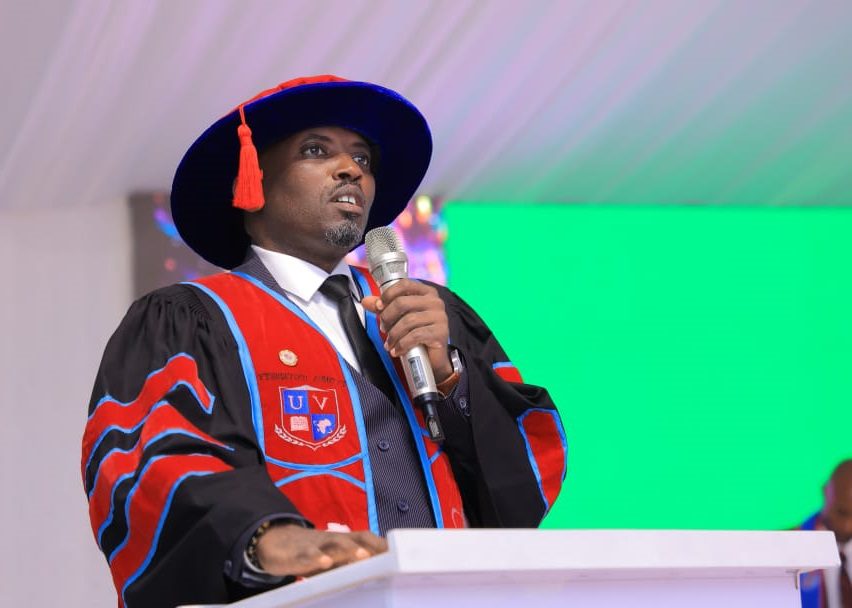Student Loan Scheme Was Built On Weak Base, We Need To Rethink Our Education- Victoria University V/Chancellor Lawrence Muganga

By Dr Lawrence Muganga
Following budget cuts in the education sector, the Higher Education Financing Students Body (HESFB) recently announced the suspension of student loans to learners seeking to join universities and tertiary institutions starting this academic year.
Of the 13,000 students that have benefited from HESFB, about 10,000 have failed to pay back their loans. Victoria University is one of the institutions that admit students on the loan scheme. The scheme, which started in 2014, aims to help needy students attain higher education, which they repay after gaining employment.
Here I would like to address the issues affecting the scheme while also suggesting a way forward. It has been widely argued that the poor payback to the scheme is the main reason behind the budget cuts, but in my view, when the government admits this is not going well, it requires us as stakeholders to rethink.
When you ask these students who complete this scheme to pay it back, it is impossible because 90 per cent of them don’t get employed immediately, and they may spend up to four years without a job. That’s why I think the conversation we should be having today should be about solutions.
The technological trends in the country show that we need science for sure, but the education problem we have today is that we do not create innovative, problem-solving students or graduates.
So, we need to create a system where students do not sit in class for passing exams but, rather, commit themselves for just 15 hours a week while the rest of the time is spent on thinking, innovating and problem-solving. That’s the only way they will end up solving pertinent issues in the country.
We, as educators, also need to rethink the way we deliver education. It was evident that our HESFB system was built on a weak foundation. It was assumed that graduates would get employment straightaway after graduation, which is not the case.
You cannot convince me that you are funding a student that you know very well is not going to have a job after university. At the time I finished university in 1998, the economy needed people to work, and it still took me some years of gaining experience to get where I wanted to be.
Today, you have people with zero experience, yet employers want people with experience. See, there is no matching. So, the solution is that government needs to invest more money in developing the internet infrastructure around the country to allow a digitalized education system.
An educational institution like Victoria University, for example, needs to take education to the people where they are. This cuts out several operational costs like accommodation of the students, transportation and feeding. So, the cost of tuition becomes cheaper. If someone has a goat, they can sell it to afford education.
In this scenario, the community becomes the classroom for the students because they can leverage technology to study from wherever they are. Here, the student sees firsthand the problems of the community and is empowered to solve them. We are already implementing this at Victoria University.
When a student fails to get a job after school, especially in skilled practical professions like nursing or hospitality, we have arrangements with various employers and can even take students beyond the boundaries of Uganda to the United Kingdom or Germany, where we have partnerships.
So, students are able to pay back their student loans and thrive. Going forward, we need to have a discussion between higher institutions of learning, especially the private ones, and the government. At the moment, all institutions are complaining of low enrollment, mostly due to a lack of funds from students to further their education.
We can have a memorandum of understanding whereby the government can allow us to enrol students with a guarantee to have funds in the future. What’s more, given that the student loans target those who are in need, I would also suggest tying the scheme to innovative ideas due to limited funds.
But that still goes back to how we deliver education or learning. For example, we can have a block model system of education that cuts across all institutions, whereby a year is not divided into a semester system but a trimester system.
Under this arrangement, a student would be able to complete a module every month, committing 15 hours a week to the module. The students would have two to three free days a week for innovative ideas. By the end of a month, a student would
be encouraged or supported to get attached to a particular enterprise that is in line with the field of study in order to gain experience along the way.
This further helps a student refine an idea. Three years down the road when they graduate, these students will already have three years of experience, and unemployment will be greatly reduced. Therefore, we need to rethink our education.
The author is the vice-chancellor of Victoria University.





